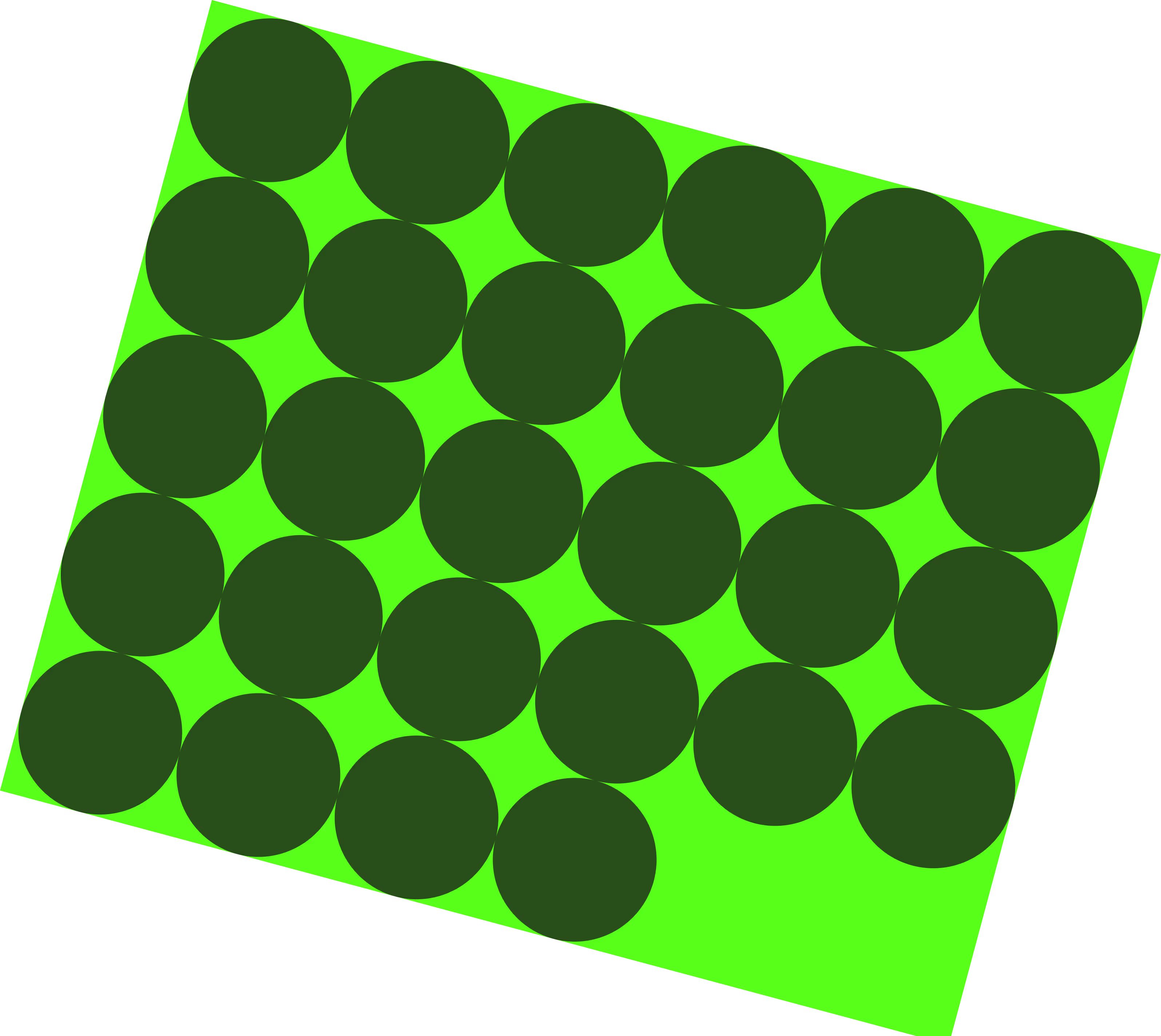Beginner's Guide to Ad Copywriting: Tips and Tricks
Understand the key elements of effective ad copy and you’ll be well on your way to crafting compelling ads that convert.

You don't have to be an advertising genius to excel at ad copywriting; you just need a few good pointers and a willingness to learn. Much of ad copywriting is rooted in psychology, so understanding how people think and a few key copywriting formulas can go a long way. With these skills, you can easily write ads that convert into sales and turn prospects into customers.
What is Ad Copywriting?
Ad copywriting is copy designed to get readers to take a specific action, such as clicking on a link or making a purchase. It's all about persuading people to pursue a desired end objective.
“Great ad copy starts with understanding the true desires of the customer. Most likely the product features are not the true desires of the customer, you must go deeper to the subconscious to demand action.” -Matthew Gattozzi, Founder and Ad Strategist at Goodostudios
You're familiar with ad copywriting already: It's the content we see in advertisements, on social media platforms as sponsored content, and on billboards worldwide. What makes it unique from other writing is that it's engineered to make people feel a certain way and take action based on that feeling.

John Emory Powers (1837-1919), the father of modern advertising, was the first full-time copywriter hired by an advertising agency. Copywriting transformed significantly after World War II and the economic boom, when some of the most iconic ads were born, such as Volkswagen’s ‘Think Small’ and the Avis ‘We Try Harder’ campaigns.

Throughout the years, ad copywriting has evolved. Even so, it’s always maintained straightforward, persuasive messages designed to drive immediate sales as well as elements of storytelling that create emotional connections with the audience. Today, ad copywriting goes well beyond traditional print copy and covers digital advertising, video scripts, social media posts, and much more.
With the rise of digital technologies, ad copywriting became a mix of art and science. Today’s ad copywriters have to understand algorithms and craft highly targeted messages based on audience insights and behavior analytics. As a result, the craft moved from a one-size-fits-all to a more nuanced, consumer-centric approach.
Oatly offers a perfect example of modern copywriting—conversational, witty, and focused on building authentic customer relationships and humanizing the brand.

Key Elements of Effective Ad Copy
Ad copywriting has three main components: headlines, body content, and calls to action (CTAs).
- Headlines: A compelling headline grabs attention and entices readers to read further. An effective headline should be clear, concise, and relevant to the audience's needs or interests. This is your opportunity to catch the reader's eye. Research shows that most people skim when reading. The good news is that you can hook them with the headline—a catchy headline (54%) tops the list of elements that convince skimmers to read.
“Anyone can write a good headline. Most people don’t even need to use their brains to do so nowadays - AI has reduced the tactical learning curve by a mile. But true empathetic, psychologically pervasive writing….the ability to write something that emotionally resonates and stays with a person long after the ad is gone from their sight…now that's a skill worth cultivating.” - Sarah Levinger, Copywriter
Example: The toilet paper brand Who Gives a Crap always uses bold, punny headlines to capture the audience’s attention.
- Body Content: The body content of the ad should provide more detail on what the headline promises. It must be persuasive, informative, and concise, so you'll have to make a big impact here with few words. Techniques such as storytelling, highlighting benefits and features, and using social proof can enhance the persuasiveness of the body content.
Example: BarkBox, a monthly subscription service for dog products, services, and experiences, is all about making dogs happy. Their body content on a sales page conveys a strong message that resonates with all dog lovers.
- Calls to Action (CTAs): A strong CTA directs the reader on the next steps to take (hence the name "call to action.") Whether it’s "Buy Now," "Learn More," or "Sign Up," the CTA should be prominent and compelling, encouraging immediate action. Usually, you'll see buttons or other eye-catching visuals associated with the call to action.
Besides the button design and color contrast, Dollar Shave Club uses wordplay to create a strong call to action that customers can’t miss.
Tried and Tested Copywriting Formulas
If you’re just starting out with copywriting, you’re probably overwhelmed just by thinking about everything you need to know and learn. The good news is: you don’t need to reinvent the wheel. There are already tried and tested copywriting formulas that some of the most renowned copywriters have been using for years. Why? Because they work. Let’s look at some of them.
F-A-B (Features-Advantages-Benefits)
The FAB copywriting formula stands for Features, Advantages, and Benefits. What makes it effective is that it helps you speak directly to your audience and communicate your message in three simple steps:
- First, talk about the features of your offering
- Then, explain the advantages of those features
- Conclude with the benefits that customers can expect
For example, if you’re selling a walking pad, you should focus on features like speed, shock absorbers, and multifunctional display. Next, you should emphasize the advantages, such as easy storage and using it under the desk while working. Last, customer benefits are highlighted, such as the ability to multitask and achieve their health and fitness goals from the comfort of their home.
B-A-B (Before-After-Bridge)
B-A-B stands for Before-After-Bridge, and it’s a great way to show the difference after using a product or a service. To use this copywriting formula, you first need to outline the current situation (before), then you need to paint a picture of how things would look after implementing the solution (after), and then you should show readers how to achieve that (bridge).
For example, if you’re selling a fitness app, you can use the B-A-B formula and say people are struggling to stay motivated and track their progress (before). After using the app for two weeks, they can lose weight, gain energy, and get personalized meal plans (after). The app can help people achieve their fitness goals faster and enjoy a healthy lifestyle (bridge).
P-A-S (Problem-Agitator-Solution)
P-A-S stands for Problem-Agitator-Solution and is one of the oldest copywriting formulas. The goal is to identify your audience’s problem, agitate it by emphasizing the negative effects it brings, and then offer a simple solution that can help solve the problem.
For example, if you’re selling energy supplements using the P-A-S formula, you can ask your audience if they are tired of waking up exhausted every morning (problem). Next, emphasize the problem by asking them to imagine how it feels to feel sluggish and unmotivated before the day starts (agitation). Then, offer the solution to the problem—energy supplements that boost energy levels and enhance mental clarity throughout the day (solution).
By focusing on the three key elements of effective ad copy and playing around with tried and tested copywriting formulas, you can craft copies that hit the nail on the head and convert readers into buyers. Let’s see some proven techniques to take your headlines, body copy, and CTAs to the next level.
Techniques for Writing Compelling Headlines
Creating a compelling headline requires a mix of clarity and intrigue. It's important, too, as data shows five times more people read headlines than body copy.
The trick with writing headlines is to avoid the clickbait trap, wherein the headline is fanaticized or misleading. Instead, you want to create a curiosity gap that piques the reader's interest and gets him or her to take action.

Here are some proven techniques for writing compelling headlines:
- Use Numbers and Lists: Headlines that include numbers often attract more attention as they are more specific and actionable. For example: "This one tip saved me 45,305 hours of reading."
- Ask Questions: Asking a question can pique the reader's curiosity. For example, "Struggling to Write Effective Ads?" invites the reader to find a solution to this pain point. Partnership for Drug-Free Kids asks hard questions in an ad to help parents have open conversations with their kids.
- Use Power Words: Words like "secret," "proven," and "best" can make headlines more appealing. because they're highly persuasive and speak to individuals' desire for insider knowledge.
- Play With Words: Clever puns and alliteration can captures attention and make the message memorable. The Sill uses word play to evoke emotions and create a sense of connection with the audience.

- Keep It Short: Whenever you want to make an impact, use a short and concise headline. Short headlines are clear and to the point. Casper uses short headlines across different touchpoints—from website copy and email campaigns to social media and outdoor advertising.
Best Practices for Crafting Persuasive Body Copy
Effective copywriting can increase your conversion rates by encouraging customers to make a purchase. Data from Confect shows that ads perform 40% better than the average when the copy falls within an ideal range of about 20 to 29 words.

Here are a few best practices to keep in mind as you write compelling body copy:
- Focus on Benefits: Instead of just listing features and specifications, explain how the product or service will benefit the reader. Benefits speak more to the results and what problems the reader can expect to have solved, whereas features focus more on the technical advantages, which aren't as persuasively compelling.
- Use Clear Language: Avoid jargon and complex sentences. Simplicity can often be more powerful, as it's easier to understand. With today's short attention spans, you'll get more out of simple, clear language than with acronyms and formalized copy. AG1 uses clear language, giving customers all the information they need to make an informed purchasing decision.
- Incorporate Social Proof: Testimonials, case studies, and endorsements help build credibility and trust. In your body copy, reference any powerful thought leader or celebrity fans, certifications, press features, and positive reviews so others can sing your brand's praises. Hearing validation from external sources is more believable than self-proclaiming greatness. The bottom line is that no one says it better than your customers. Branch Basics knows this, so they use customer reviews in their ads to promote their products.

- Use a Conversational Tone: Writing in a friendly, conversational style helps to create a connection with the reader. This approach makes your content more relatable and engaging. Sometimes, the most effective way to convey a message is to write it exactly like you mean it. Simply Protein did this with their ad, which says what’s on everyone’s mind.
Tips for Creating Strong CTAs
A strong CTA can mean the difference between a conversion and a lost opportunity. And while it seems like the shortest and the easiest task of writing an ad, neglecting the importance of a CTA can cost you lost sales. After analyzing more than 330,000 CTAs, HubSpot discovered that personalized call-to-actions perform 202% better than basic CTAs.
To craft effective CTAs:
- Be Direct: Use clear and unambiguous language. Make a simple request for the next steps.
- Create Urgency: Phrases like "Limited Time Offer" or "Act Now" can encourage prompt action, as it creates a feeling of scarcity and urgency. Steve Madden promoted its limited drop release by urging customers to act fast and reserve their pair of sneakers.
- Highlight Benefits: Emphasize what the reader will gain by taking action and the results/outcomes you can deliver with your offering.
- Make It Stand Out: The roll of call to action is to provoke an instant reaction—whether that’s making a purchase, booking a meeting, or subscribing to a newsletter. To achieve that goal, your call to action must stand out. Public Rec used a strong call to action for Father’s Day sales with a message that’s hard to ignore—”Don’t forget dad.”
- Experiment and Optimize: Google encourages experimentation with different CTAs to see which ones perform best. Remember: Testing ad copy is a learning process that requires trial and error.
Common Mistakes to Avoid in Ad Copywriting
Even experienced copywriters make mistakes. Whether you’re under the pressure of a tight deadline or overwhelmed with all the information that needs to be packed in a short ad copy—refining the art of copywriting is a trial and error process. However, being aware of some common mistakes and traps can help you spot them and overcome them early on in the process.
Here are some common pitfalls to avoid:
- Being Too Vague: Clear and specific language is crucial. Avoid generic statements that don’t convey a strong message.
- Ignoring the Audience: Tailor your copy to your target audience's specific needs and interests, and make sure your offer is highly relevant.
- Overloading Information: Too much information can overwhelm the reader. Keep your copy concise and to the point.
- Lack of Emotional Appeal: Ads that don’t create any emotional reaction can be dull and less effective. Always try to include elements that appeal to emotions, such as fear of missing out, excitement, or a sense of urgency.
- Weak Call to Action: Using basic call to actions, such as “Learn More” or “Click Here” can often feel generic and boring. If you want to urge customers to take action you need to use strong CTAs that lead customers to the next step.
As you iterate and learn, note what works and what doesn't regarding ad copy. Over time, you'll discover what resonates with your audience by testing different ad copywriting tactics.
Resources and Tools for Improving Ad Copywriting Skills
Improving your ad copywriting skills is a continuous process. Here are a few resources and tools that can help speed up the process:
- Books: The Adweek Copywriting Handbook by Joseph Sugarman is a must-read for aspiring copywriters and a great place for beginners to start. Another great book is Copywriter's Handbook by Robert W. Bly—a masterclass in persuasive writing for the digital age.
"Language has not changed and human desires have not changed, so learn from the best copywriters of the past. I love reading Ogilvy, John Caples, and Claude Hopkins. The older the book, the better." -Matthew Gattozzi, Founder and Ad Strategist at Goodostudios
- Online Courses: Websites like Udemy and Coursera offer courses and certifications on ad copywriting. Another great resource is My First Million's Copywriting Crash Course, where they share the writing framework that helped them build +$10M newsletters.
- Tools: Running your ideas for ad copy through an AI-powered copy tool can help you iterate faster and work more efficiently.

- Copywriting Blogs: Copyhackers is the go-to resource for learning conversion copywriting. Another great blog is Copyblogger where you can find questions to almost every copywriting question you have.
- Podcasts: Check out The Hot Copy—a copywriting podcast for copywriters by Belinda Weaver and Kate Toon. Another copywriting podcast you can check out is Build Your Copywriting Business by Nicki Krawczyk and Kate Sitarz.
Ad Copywriting: Master the Skill
Mastering ad copywriting involves creativity, strategy, and continuous learning. By understanding the key elements of effective ad copy, avoiding common mistakes, and utilizing available resources, you’ll be well on your way to crafting compelling ads that convert.
FAQ
What makes good ad copy?
Good ad copy is clear, persuasive, and has a strong call to action. Focus on the three key elements of an effective copy: headline, body copy, and a call to action. Use the headline to capture attention, the body copy to persuade your audience, and the call to action to encourage instant reaction.
How do I write compelling headlines?
To write compelling headlines, use proven techniques, such as including numbers and lists, asking questions, using power words and clever puns, and keeping your headlines short.
How can I improve my ad copy's conversion rate?
To improve your ad copy’s conversion rate, use persuasive language, include social proof, refine your call to action, and use A/B testing to see what copy performs best based on data.
More of the latest & greatest

Scaling AI for the Enterprise: How Marketing Leaders Drive Impact
High-performing marketing teams are scaling AI with structure and strategy. Learn how CMOs can lead the way to drive organization-wide impact.
July 1, 2025
|
Megan Dubin

Reflections from Cannes: Why Brand and People Still Matter Most in the Era of AI
At Cannes Lions 2025, one truth stood out: brand, trust, and authenticity are making a powerful comeback.
June 24, 2025
|
Loreal Lynch

Interactive Tool: Benchmark Your AI in Marketing Strategy
Discover your marketing team's AI maturity. Benchmark your strategy, compare with peers, and uncover gaps with an interactive tool.
June 17, 2025
|
Megan Dubin







